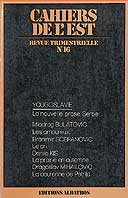TERITORIUL RURAL AL MUNICIPIULUI TIBISCUM
The territory of the municipium Tibiscum is best identified in the south, where the inscription raised by P. Ael. Ariortus, magistratus of Dierna. represents a clear proof; at the east – the entrance in the Iron Gates of Transylvania; at the west, the borders go beyond the camp line Lederata-Tibiscum, with some uncertainty in the plain area; at the north, it could include the settlement from Sânnicolau Mare, reaching the river Mures. It is very possible that this territory belongs to the pagus of Micia. This territorium did not include the auxiliary camps with the vici militares which possessed a different territory. The mining rural settlements could have belonged either to a mining district or to the ancient city.
More...
